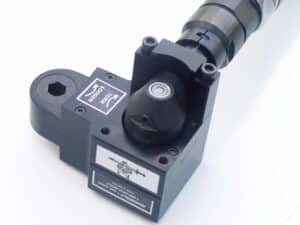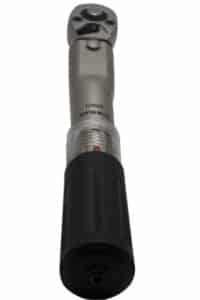For industrial product manufacturers or assemblers, having pinpoint control to tighten, loosen or measure the level of torque on fasteners is critical.
Here’s why:
- If the fastener is too loose, it can vibrate or – in extreme cases – come off completely
- If it’s too tight, the fastener can break or become stripped
That’s unacceptable in either case, because having to tighten or loosen fasteners over and over again slows down productivity and profitability – and can impact worker safety and machine efficiency.
1. Establish your torque needs
When calculating torque specs, there are many things which need to be considered:
- Maximum load to be placed on the fastener
- Strength of joined materials
- Hardness and/or softness of the joint in question
To do this effectively, you can perform a destruction test using a calibrated torque control tool on the material and fastener to be joined.
Here’s how it can be done:
- Tighten the fastener until it reaches its failure threshold
- Repeat several times to validate its failure point
- Then, torque the joint to approximately 75% of the failure point
By doing this, you should have a better idea of how much force is actually needed to establish proper torque control.
Anyone who is responsible for tightening threaded fasteners needs to be able to properly determine accurate torque control levels.
It’s the difference between building a safe and reliable product versus a total disaster that’s fraught with liability repercussions.
Keeping that in mind, the following tips can help you achieve pinpoint torque control.
2. Use the right tool
There are many tools available to control and measure torque that’s applied to fasteners, such as:
Using Torque control bolting tools is the most accurate way. A certified tool has a known torque output at either a compressed air setting or a hydraulic pressure setting, depending on the tool. Tools are tested, calibrated and certified to NIST standards. This gives assurance that the tool is doing its’ job.
3. Test with torque testers
Correct usage of torque testers is a fast and reliable method to help you calibrate torque tools so that they reach their proper settings.
You can also use testers to field test whether or not the torque tools you’re using are actually maintaining its setting as expected.
Digital torque tool calibrations systems offer the added benefit of being able to save the readings of several measurements over an extended period of time. This ensures you have an accurate record of how torque tools have performed in the past.
4. Train your employees
World-class torque tool suppliers often provide training sessions and seminars to all relevant and interested employees.
These workshops can include topics like:
- Torque theory
- Available torque tools
- Tool operations
- Maintenance tips
- Safety
- Ergonomics
5. Keep checking your torque tools
They say that an ounce of maintenance is worth a pound of cure.
It applies to medicine, but it also applies to your torque tools as well.
Check your torque tools on a regular schedule to look for wear-and-tear and defective parts. By scheduling maintenance checks at established intervals, you’ll be able to:
- Optimize tool performance
- Limit downtime
- Save money in the long-term by extending the life of your tools
It always pays to give the tools a through look-over every so often to ensure that they’re in premier working condition.
6. Partner with Ultra Torq
Ultra Torq has the experience, skills and technical know-how to help you maximize your torque tool performance.
When tools are working properly, so are you. That also means you’re making profit too.
We can help keep your tools working smoothly, so you can focus on what matters: getting the job done.
Contact Ultra Torq today to request a product demonstration or to speak with one of our torque tool experts.





